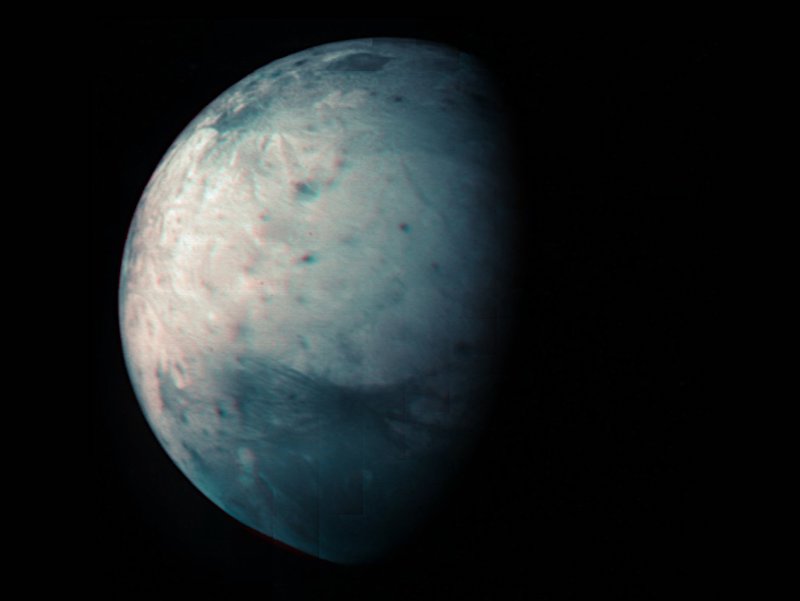
NASA’s Juno mission: 10 years since launch
The Juno mission to planet Jupiter is celebrating its 10th year since the spacecraft launched on August 5, 2011. Juno went into orbit around Jupiter, the largest planet in our solar system, in 2016. Since then, it’s been studying the giant planet and its diverse family of moons. As part of the celebration, the Juno team just released a new infrared view of Jupiter’s largest moon, Ganymede (above). Juno is the first NASA mission since Galileo that’s dedicated to the Jupiter system, a place that, in many ways is like a mini-solar system. Jupiter has both hot and cold moons. Some of its large moons might even be habitable. Maybe we’ll find life there!
Juno began its 1,740-million-mile (2,800-million-km) journey to Jupiter on August 5, 2011, from Cape Canaveral Air Force Station in Florida. It arrived at Jupiter and went into orbit on July 4, 2016. It has been a very busy little spacecraft ever since, as project manager Ed Hirst at JPL recounted:
Since launch, Juno has executed over 2 million commands, orbited Jupiter 35 times, and collected about three terabits of science data. We are thrilled by our ongoing exploration of Jupiter, and there is much more to come. We have started our extended mission and look forward to 42 additional orbits to explore the Jovian system.

Jupiter: A world of wonders
Juno has studied the Jupiter system more closely than any mission before it, including the successful Galileo, which was active from 1989 to 2003. Juno has peered deep into Jupiter’s thick, cloudy atmosphere, and observed huge storms – including of course the Great Red Spot – as well as auroras and the planet’s powerful magnetic field.
Although it is designed primarily to study Jupiter itself, Juno has also made observations of some of Jupiter’s other moons also, like Europa and Io. The infrared images of Io’s volcanoes erupting are some of the most incredible of the mission. The next close encounter with Europa will occur in September 2022, and with Io in December 2023 and February 2024.
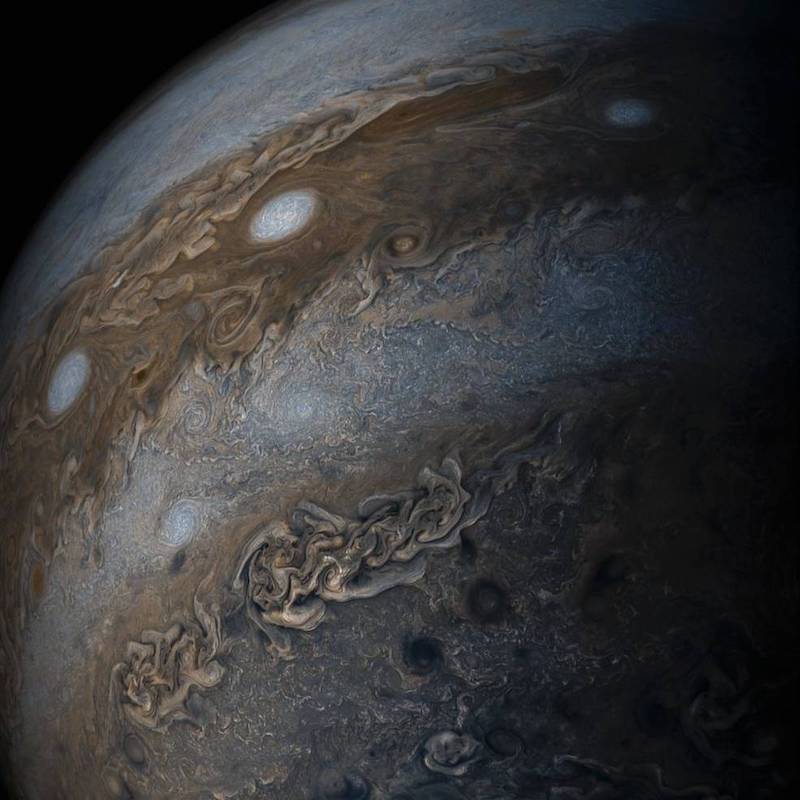
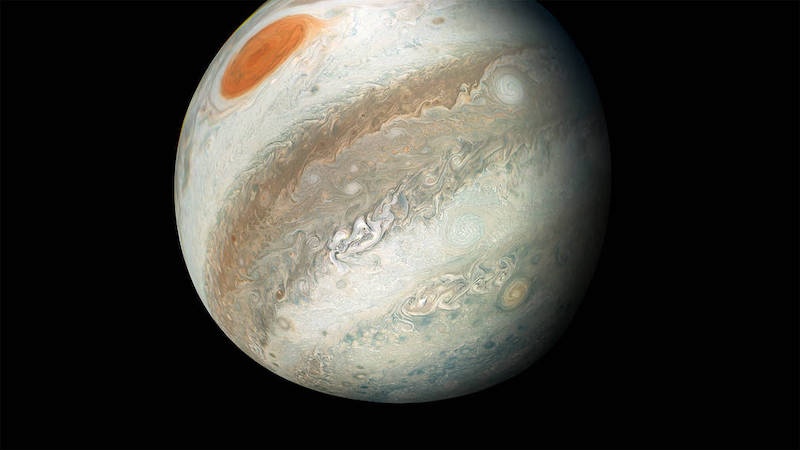
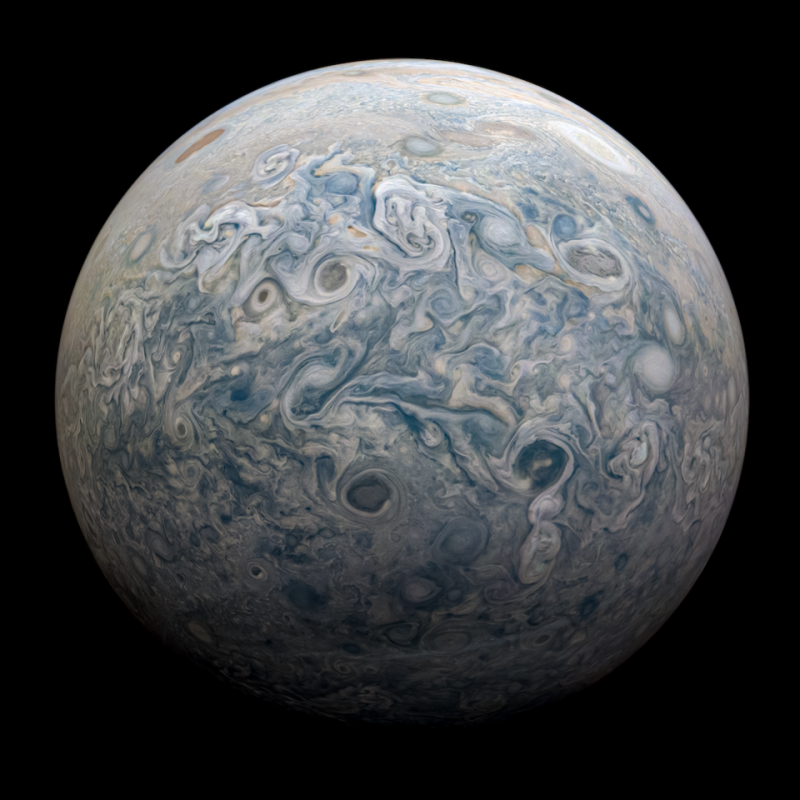
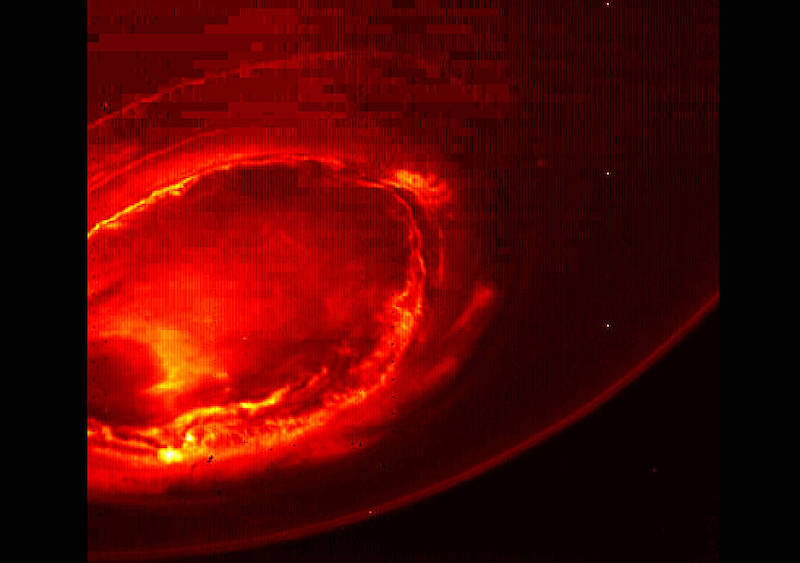
Powered by solar energy in a polar orbit
Unlike previous spacecraft sent to Jupiter, Juno uses solar power instead of nuclear. It has the largest solar panels of any planetary mission, in order to capture the fainter sunlight at Jupiter’s great distance from the sun. The three solar panels look like huge blades jutting out from the body of the spacecraft.
Juno is constantly spinning to keep itself stable as it makes oval-shaped orbits around Jupiter. You can watch the full interactive experience at Eyes on the Solar System. Juno circles Jupiter in an elliptical polar orbit, allowing for the best-ever views of the planet’s polar regions. The spacecraft takes 14 days to finish each orbit and has now completed 35 orbits around Jupiter so far.
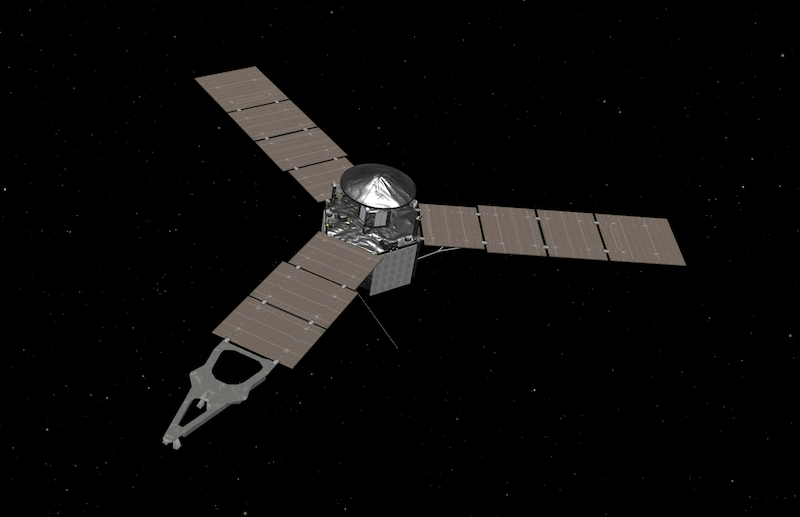
Juno’s orbit and orientation are designed so that the solar panels face the sun most of the time. The spacecraft spins twice per minute, both for stability and to allow each instrument a chance to view the giant planet. The close orbits also allow Juno to avoid most of Jupiter’s intense radiation.

Ganymede in infrared
As a visual tribute to the mission, the mission team released a new image of Ganymede in infrared. It is composed of data from three flybys of the moon, including the latest one on July 20, 2021 (top of post). The images, taken by the Jovian Infrared Auroral Mapper (JIRAM) instrument, show the surface of Ganymede in infrared, a wavelength not visible to the human eye.
Infrared views like this can provide important information about the moon’s icy surface and the deep water ocean beneath its outer ice crust. Even though JIRAM is primarily used to study Jupiter’s atmosphere, it can also be used for observations of the four largest moons: Io, Europa, Ganymede and Callisto.
Not only is Ganymede the largest moon of Jupiter, it is also the largest moon in the solar system. It is even larger than Mercury. It is also the only moon in the solar system with a magnetic field. As Juno Principal Investigator Scott Bolton stated:
Ganymede is larger than the planet Mercury, but just about everything we explore on this mission to Jupiter is on a monumental scale. The infrared and other data collected by Juno during the flyby contain fundamental clues for understanding the evolution of Jupiter’s 79 moons from the time of their formation to today.
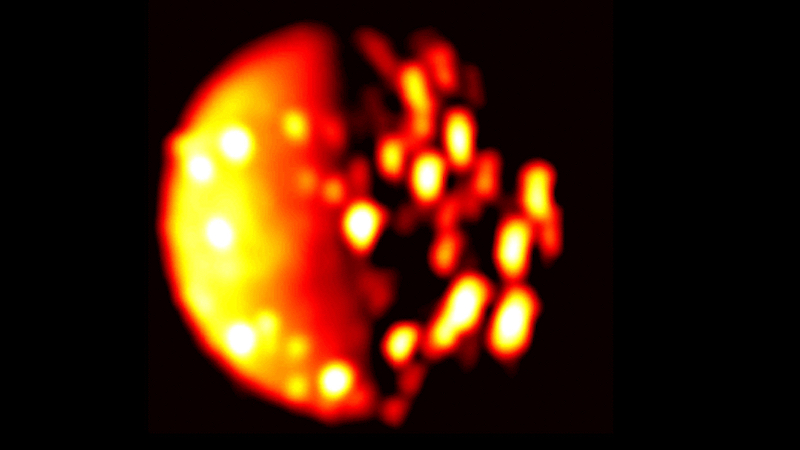
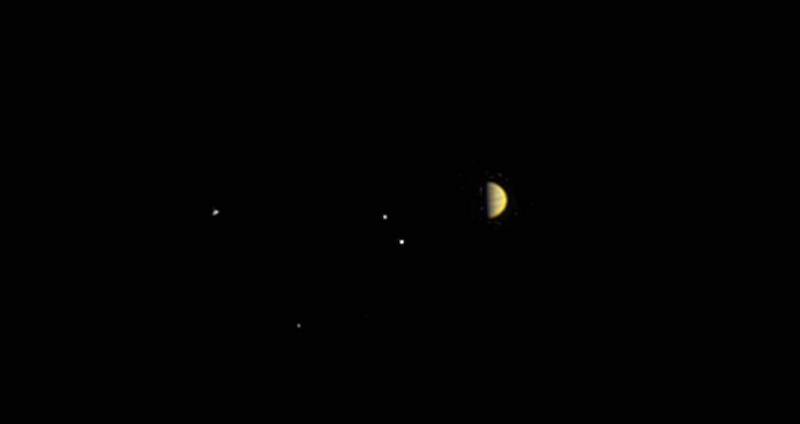
First new views of Ganymede since Galileo
The three flybys of Ganymede so far have provided the closest new views of the icy moon since the Galileo mission. JIRAM has been able to see the moon’s north polar region for the first time, as well as compare the diversity in composition between the low and high latitudes. The previous closest images were taken by Galileo in May 2000.
During the most recent flyby, on July 20, 2021, Juno came within 31,136 miles (50,109 km) of Ganymede. An earlier flyby, on December 26, 2019, was a bit farther out, at 62,000 miles (100,000 km). The closest flyby so far, on June 7, 2021, came within only 650 miles (1,046 km) from Ganymede’s surface. Juno sent back spectacular close-up images during that flyby, and found the first evidence of water vapor on the moon. You can also “ride along” with Juno as it swept past Ganymede and Jupiter in a cool video from that flyby.
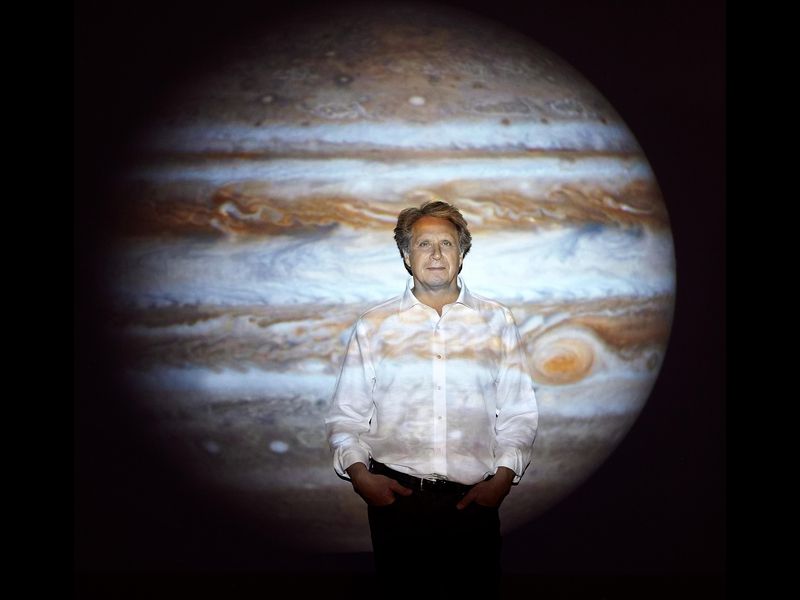

A plethora of science instruments
Juno is equipped with a wide array of science instruments, including:
- Microwave Radiometer (MWR): To measure the abundance of water and ammonia in the deep layers of Jupiter’s atmosphere and to obtain a temperature profile of the atmosphere.
- Jovian Infrared Auroral Mapper (JIRAM): A spectrometer to provide images of auroras in Jupiter’s upper atmosphere.
- Magnetometer (MAG): To map Jupiter’s magnetic field and to determine the dynamics of the planet’s interior.
- Gravity Science (GS): To map the distribution of mass inside Jupiter by measuring Doppler changes in the spacecraft’s radio signals.
- Jovian Auroral Distributions Experiment (JADE): To measure the angular distribution, energy, and the velocity vector of ions and electrons at low energy present in the aurora of Jupiter.
- Jovian Energetic Particle Detector Instrument (JEDI): To measure the angular distribution, energy, and the velocity vector of ions and electrons at high energy present in the aurora of Jupiter.
- Radio and Plasma Wave Sensor (Waves): To identify the regions of auroral currents that define Jovian radio emissions and acceleration of the auroral particles.
- Ultraviolet Spectrograph (UVS): To provide spectral images of the ultraviolet auroral emissions in the polar magnetosphere.
- JunoCam (JCM): A visible light camera/telescope to study the dynamics of Jupiter’s clouds, and to facilitate education and outreach.
There is still a lot more science to be done with Juno, scientists say. In June 2018, NASA extended Juno’s mission to July 2021. A second mission extension was recently approved that will allow Juno’s observations to continue until September 2025. As long as it remains healthy, Juno will continue to unlock the secrets of Jupiter and its moons for several years to come.
Learn more about Juno at the mission website
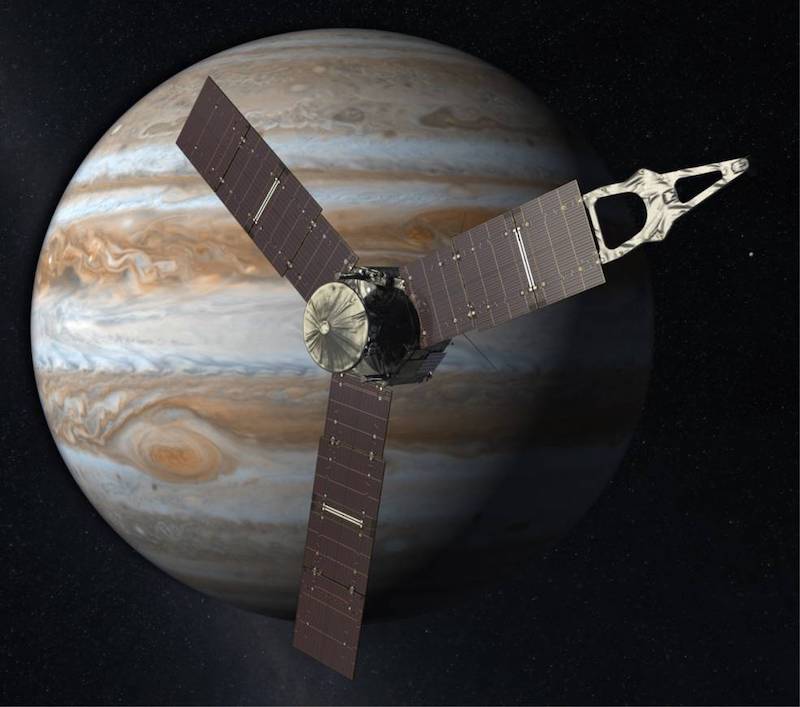
Bottom line: NASA’s Juno mission to Jupiter is now in its 10th year. The mission team has released a new infrared image of Jupiter’s largest moon Ganymede to help celebrate. Juno has revolutionized our knowledge about the largest planet in our solar system and its many moons.











